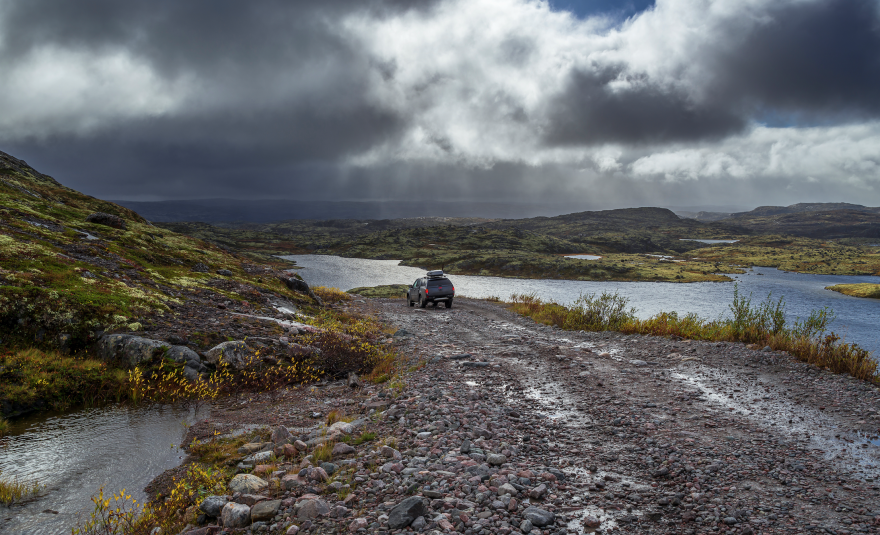
Overlanding 101, here is everything you need to know about hitting the trail with the right gear to tackle the great outdoors.
Have you ever wanted to get away from it all? No, I mean really get away from it all? Overlanding typically describes adventure travel that is totally self-reliant, hitting the trail without need to depend on anyone or anything else other than what’s packed into your vehicle.
A good many gearheads steeped in the overlanding lifestyle take it very seriously. They have a point; setting out on a journey that’s about exploration, not strictly about overcoming geographical obstacles, requires a great deal of foresight and planning. Sure, the paths and trails on which an overlander will drive are likely to be on the flip side of rugged, but they are simply the route taken and not the entirety of the experience which can include learning about another culture and having a love of the great outdoors. In this way, overlanding is the polar opposite of rock crawling or mud bogging.
It’s still decidedly an off-road focused activity, though, so one can be forgiven for misunderstanding the role one’s vehicle plays in overlanding. Because it is self-reliant travel, trucks and SUVs tasked with carrying an overlanding troupe will need to be as seriously built as any other off-road machine. Sleeping facilities are a must, as are amenities for clean drinking water and cooking. Think of it as vehicular backpacking and you’ll be on the right track.
Far and away, the most important upgrade a person (any person, not just an overlander) can make to their vehicle is an appropriate set of tires. Overland rigs will need an aggressive set such as the BFGoodrich KO2 or the new Firestone Destination XT, for example. Tires like these will be the first step to bulletproofing a machine for overlanding duty. It’ll be a 4×4 machine, natch.
Experienced overlanders know the value of assembling all required kit before leaving the trailhead. A refrigerator, for example, can keep ice in a frozen state for days, preventing spoiled or soggy food. As for where to put all this gear, some people simply arrange it neatly in the truck’s bed while others rebuild the inside of their cargo areas with the zeal of This Old House.
As an example of lengths to which some people will go to remain off the grid, solar panels are becoming an increasingly popular method of powering electric devices while on the trail, saving fuel and the truck’s battery juice. This is particularly handy, as overlanding generally takes drivers to the far flung reaches of civilization.
Naturally, all this activity needs fuel, otherwise you’ll run out of gas faster than the Lakers’ playoff hopes. This should help explain why overland vehicles often have fuel cans lashed to a rooftop carrier or mounted on the cargo doors. There is an argument to be made that if one is within reach of a gas station, they’re not really overlanding, just off-roading.
Speaking of greasy truck bits, a casual observer might think those aftermarket bumpers a simply for looks or to strengthen the vehicle’s front end after the driver misjudges an obstacle and comes face-to-bumper with a huge boulder (hey, it’s happened to all of us). In reality, those stout bumpers offer overlanders a place on which to install items like a winch or auxiliary lighting, gear that is critical to have when the next nearest human is several hours away.
How about those sleeping quarters we mentioned earlier? A great number of overlanders choose a rooftop or bedtop tent, allowing for stretch-em-out comfort after the sun goes down. Mounted on a solid frame attached to a truck bed or SUV roof, these tents are surprisingly sturdy and spacious, not to mention offering protection from nature’s friends of the winged and four-legged variety. Be sure to pack in a few simple tools in case things go awry out on the trails. Modern technology like GPS keeps overlanding people on the right track, even if it is unmarked.
By and large, overlanding takes two popular American pastimes – camping and off-roading – and mashes them together before cranking things to eleven. It is type of adventure where the journey is just as important than the destination. Tossing in some challenging driving that would flummox a stock vehicle makes for an experience not soon to be forgotten by the whole family. If you truly want to get away from it all, overlanding is your answer.
Image courtesy of Shutterstock
 Your Privacy Choices
Your Privacy Choices
 The
The